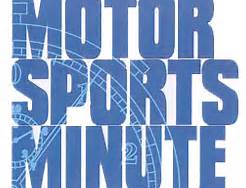In The Stands And On The Tube – They Aren’t Around Here Anymore
- Updated: July 8, 2013
CHARLOTTE, NC (July 8, 2013) – It’s no secret NASCAR is struggling with on-site race attendance these days. Some at-track crowds are down as much as 50 percent since 2007.
Large numbers of open seats cleverly covered up by giant advertising tarps have tracks like Daytona International Speedway reducing seating by the 10’s of thousands as part of future renovation plans. If that’s not a sign that NASCAR thinks these folks are not coming back, nothing is.
There have been multiple reasons offered for the drop in NASCAR attendance. The most prevalent is the lingering hangover from the 2007 economic crash. Another is that many fans have chosen the inexpensive NASCAR television ‘experience’ over the costly, crowded, time-consuming, in-person race attendance.
One’s right, one isn’t.
Even the most diehard NASCAR fans don’t attend as many races as they have in the past. The 2007 economic flush crushed a lot of folks and impacted just about everybody else. Money just doesn’t flow the way it used to – unless you are at the gas pump, grocery store or seemingly anywhere else in between.
The attendance deal – or ‘in-studio audience’ as Formula One refers to it – is easy to rationalize.
As they say, it’s the economy, stupid.
The TV deal is a little more of a riddle.
With more technology than ever before, watching a race on television is amazing most of the time. One of the current conventional reasonings is fans are attending fewer events in person these days because of the technology – happy to never leave the couch and their 60-inch HD TV race experience.
The puzzler here is NASCAR’s television ratings – along with in-person event attendance declines – have fallen anywhere from 5-20 percent depending on the network over the 2009-2012 seasons.
Most recently, early returns indicate that Saturday’s TNT coverage of the NASCAR Sprint Cup event from Daytona International Speedway attracted 5.7-million viewers. Kentucky, Sonoma, Michigan and Pocono – all on TNT in recent weeks – drew viewership in the 4-4.7 million fans at home watching on TV.
Those numbers are consistent – and actually a little down – from the 5-million viewer average TNT posted over its 2012 six-race broadcast schedule.
Meanwhile, the FOX folks will be quick to jump in and tell you their recently completed 2013 run of NASCAR Sprint Cup telecasts were their most successful ever averaging 7.8 million viewers.
The reality is those numbers include a giant bump – 16 million plus viewership in the season-opening Daytona 500 when Danica Patrick started from the pole position.
And – despite the big start, 2013 Sprint Cup television viewership numbers on FOX showed zero growth as they mirrored the 4.8 share and 7.9 million viewers tallied in 2012.
Meanwhile, ESPN viewership for the final 12 races of the 2012 season – including all 10 Chase ‘playoff’ races – never eclipsed 6 million viewers on the top end with some events drawing fewer than 4 million.
Thanks to the NFL in the fall, NASCAR’s championship events draw some of its smallest viewing audiences – in the 3-million plus range – via cable to ESPN cable and satellite subscribers.
Here’s the dope on the 2009-2012 TV viewership numbers –
FOX – 8.5 million viewers in 2009, 7.8 million this year.
TNT – 5.5 million in 2009, 5.0 million in 2012.
ESPN – 5.49 million in 2009, 4.2 million in 2012.
Back in the 1990’s and early 2000’s, NASCAR demographic numbers used to put the sport’s fan base at as many as 75 million. There never were that many fans back then – and who really knows how many there are now?
50 million?
Dream on.
40 million?
Probably not.
Maybe 20 million?
Maybe.
15 million?
Hell, I don’t know. The on-site and television numbers combined range from 3-16 million depending on the race. The real number is probably in there somewhere.
Whatever the current tally of NASCAR fans is, your eyeballs tell you pretty clearly that there are a lot fewer of them are at the track, – and the numbers say fewer of them are watching on television.
Who knows where they’ve gone?
Or why?
But they aren’t around here anymore.
John Close covered his first NASCAR race in 1986 at Bristol. Since then, Close – a former Associated Press newspaper sports editor – has written countless articles for numerous motorsports magazines, trade publications and Internet sites.
His Close Calls column appears each week on www.CloseFinishes.com, www.MotorsportsAmerica.com and www.RacingNation.com.
Close has also authored two books – Tony Stewart – From Indy Phenom To NASCAR Superstar and NASCAR Craftsman Truck Series – From Desert Dust To Superspeedways.
Close is a weekly guest every Thursday at 1 p.m. Eastern on Tradin’ Paint on NASCAR SIRIUS Channel 90.
You can follow John Close on Twitter @CloseFinishes and on Facebook at John Close.
Be sure to visit John’s website – www.closefinishes.com




![Porsche Fabcar crosses the finish line. [Robert Madara photo]](https://racingnation.com/wp-content/uploads/2023/11/FabcarFinish-108x70.jpeg)

![USF2000 Pro driver Lindsay Brewer. [Eddie LePine Photo]](https://racingnation.com/wp-content/uploads/2023/06/IMG_8825_2-108x70.jpg)